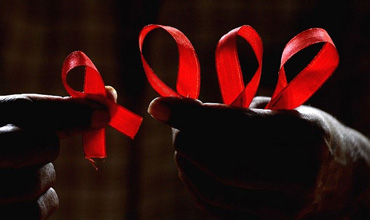Disclosure and Non-Disclosure of HIV Positive Status to Partners among Pregnant Women at a Regional Hospital in Swaziland

Abstract:
Individuals
diagnosed with HIV often have difficulty disclosing their status to others, yet
hiding the diagnosis can have serious implications. Disclosure of HIV status involves
a process of decision-making, based upon numerous factors. This study was done to
explore the reasons why some women disclose and some do not disclose their HIV status.
The study was conducted in a regional
hospital in Manzini. The researcher employed the qualitative descriptive phenomenological
methodology. Convenience and purposive sampling were utilized, and the data collection
methods were in-depth Interviewing methods. A total of 15 pregnant women attending
antenatal care were interviewed.
Most prominent reasons for disclosure of the HIV status
by pregnant women attended to for the PMTCT program were that of the need to practice
safer sex. Some felt the need to disclose because it would make their sexual partners
to protect the unborn babies and to reduce the chances of re-infection. Most women
who disclosed stated that they were so hurt by finding themselves HIV positive yet,
they knew that they were faithful to their sexual partners. Some stated that they
needed somebody to share the pain with. Some women stated that they did not disclose
their HIV statuses out of fear of lack of support and probably domestic violence.
Keywords: Disclosure, HIV, PMTCT, domestic violence, SWAGAA, antenatal care.
References:
[1]. Allen-Meares, P. (1985)
Content analysis: It does have a place in social work research. Journal
of social service research 7 (4) 51-69
[2]. Anthanasion G.P. (2007),
Ethical issues on PSA testing. California.
Hall.
[3]. Brink, H.I. (2006).
Fundamentals of Research Methodology for Health
Care Professionals, 6th edition. Cape Town. Juta and Company Ltd.
[4]. Burns N. and Grove
K. (2009). Practice of nursing research, appraisal,
synthesis and generation of evidence 6th ed. Saunders. Elsevier.
[5]. Cresswell, J. (1994)
Research Design: qualitative and quantitative
approaches. Thousand Oaks, Sage Publications.
[6]. Denzin, J. &Lincoln,
Y. (1994). Handbook for qualitative research,
Newbury Park, CA: Sage publications.
[7]. Dyk A. (2008). HIV AIDS Care and counseling. A multi-disciplinary
approach, 4thedition. South Africa. Pearson Education.
[8]. Gielen, A.C, O ‘Campo
P. Faden, R.R. and Eke, A. (1997). Women’s disclosure of HIV status: Experiences
of mistreatment and violence in an urban setting. Women and health, (25)3.
[9]. Herek, G.M. (1999).
AIDS and stigma. American Behavioral Scientist,
42(7) 1102-1112.
[10]. Kalichman, S. &
Simbayi, L. (2004). Traditional beliefs about
the cause of AIDS and AIDS related stigma in South Africa. AIDS care, 16(5).
[11].
Kimberly, A. &Serovich,
J. (1996). Perceived Social Support among people living with HIV and AIDS. The American journal of family therapy.
[12]. Mokhokha, M.D. (2000).
Black Women Diagnosed as HIV positive: Their
psychological experiences and coping mechanisms. Pretoria: University of Pretoria.
[13]. Miles, B. & Huberman,
M. (1994). The qualitative researchers companion,
thousand oaks, Sage publications.
[14]. Polit, F.P. and Hungler,
B.P. (2000), Essential nursing research.5thedition.
Philadelphia. JB Lippincott Company.
[15]. Schmidt, C. and Goggin,
K. (2002). Disclosure patterns among HIV positive women. Behavioral health trends. 1, 40-43
[16]. Skinner, D & Mfecane,
S. (2004). Stigma, discrimination and implications for people living with HIV/AIDS
in South Africa. Journal of social aspects.
[17].
Swaziland Demographic
Health Survey (SDHS) 2006-2007.
[18]. UNAIDS and the WORLD
HEALTH ORGANISATION, (2002). Fighting HIV
Related Intolerance: Exposing the links between racism, stigma and discrimination.
Geneva: UNAIDS.

